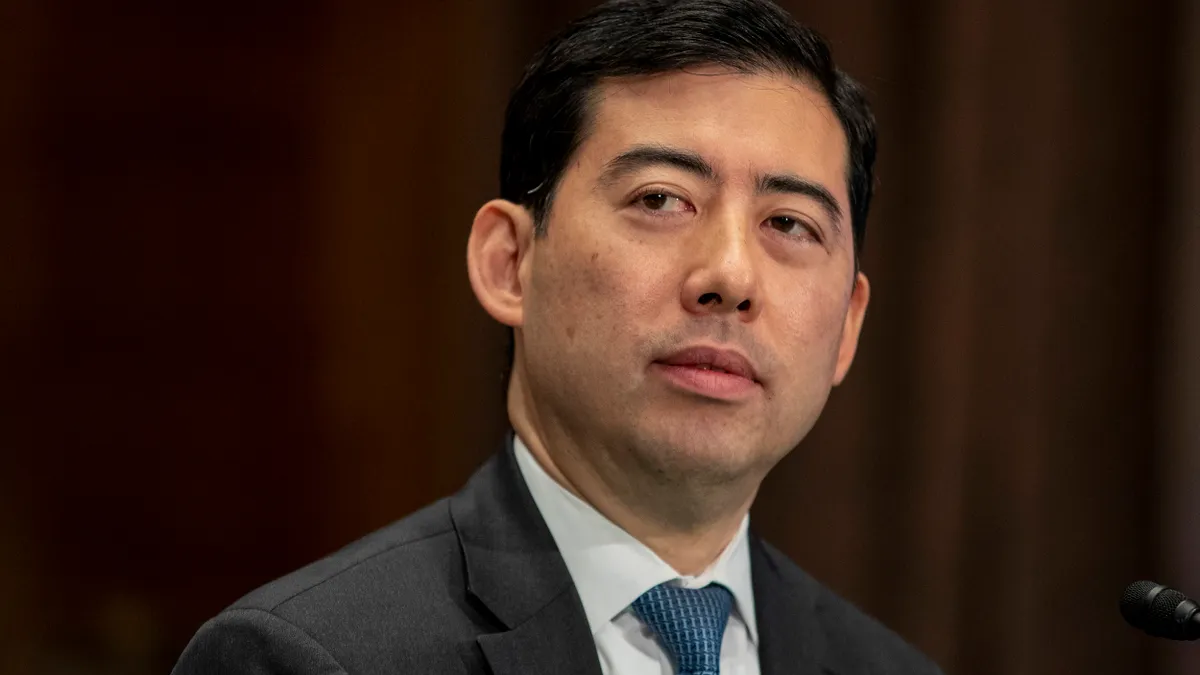With ongoing trade wars, Brexit, and threats of cyberattacks stemming from geopolitical tensions, CIOs braced for disruption in 2020.
Whispers of a brewing economic contraction became headline news in late 2019, as research showcased the type of companies in a position to successfully navigate disruption. To preserve and encourage technology investments, CIOs had to show executive leadership how tech can alleviate business concerns.
With IT budgets expected to grow for 56% of companies, additional spending would support digital transformation, cybersecurity and cloud-first strategies, according to Flexera research.
Want to read more about technology priorities? Click here.
But the coronavirus pandemic turned enterprise attention to cost management and trimming the fat of unnecessary spend. Executives had to find savings, and much of it lurked in mismanaged investments.
Consider the IT rule of 30, Hyoun Park, CEO and principal analyst of Amalgam Insights, told CIO Dive. Any unmanaged IT spend category has about 30% of spend wasted.
It can come from any number of areas, Park said:
-
Zero-usage accounts or services
-
Duplicate accounts or services
-
Services assigned to a former employee
-
Project no longer exists
-
Services set up with wrong features
-
Outdated service plans
It's as simple as turning off an unused service. But simplicity is muddled by business constraints. Previously-robust technology budgets are hampered by pandemic-motivated cost-saving measures. Cost control is a must, not a nice to have.
January 2020
Operational efficiency was the "initiative de jour" for business technology leaders, said Jarod Greene, general manager of the Technology Business Management Council, which advocates for running IT as a business. Digital transformation was also top of mind.
Prior to the pandemic, 38% of TBM Council members were focused on improving operational excellence and 36% prioritized revenue and business growth, according to survey data of about 200 TBM Council members shared with CIO Dive.
With a strong economy, cost optimization wasn't yet the primary focus.
Business decisions under COVID-19
The pandemic didn't only change technology priorities — it changed the reason why business had to transform.
With COVID-19, 66% of decision makers turned focus to cost optimization, while 34% prioritized operational efficiencies, according to TBM data.
While the adoption of a "digital workplace" accelerated, organizations tried to determine what areas to "cut without impacting business too bad," Greene said. Creating financial agility early on allowed businesses to make more decisions for the second half of 2020.
Quick cost saving areas included:
-
Cuts to travel and expense
-
Delaying projects
-
Delaying hires
2021 and beyond
One of the main challenges coming out of this year, budget freezes will delay investment in next-generation technology that could help businesses operate more efficiently.
Following the 2020 sprint to adopt collaboration, remote work and team-based technologies, businesses are going to focus more on the associated data, Park said. The analytics and technologies to track text, documents and sharing will help businesses understand how work takes place, showing what they can automate.
Automation and process investments put on hold in the first half of 2020 will gain full steam in Q4 and moving into 2021, Park said. Automation can take the place of decisions businesses used to make in the office.
How priorities shifted
The pandemic has been a "great catalyst" for changes CIOs have long worked to drive, including more agile tech initiatives responsive to the business, Greene said. It shows the "why" for technology investment and innovation, proving to business leaders IT is not just about procuring and provisioning technology.
It's also showed the excess. Technology stacks have built up over decades, and revolving technology leadership means leftover legacy applications are forgotten.
Lofty 2020 digital transformation goals pivoted toward controlling the minutiae of IT spending. Industries hardest hit, including hospitality, restaurants and retail, require more cost scrutiny.
Business leaders "talk about cutting fat, not muscle," Greene said. It requires leaving emotion out of the room.
Typically there's a passion around apps and services that people manage and support, he said. Scrutinizing spend can make for awkward discussions about how many people are using an application or how it's performing, but they're imperative.
The benefit is technology is seen as a growth engine. Organizations don't want to hamstring IT because it was what kept businesses operating when everything shut down.
The hope is IT capabilities create more flexibility for the technology business unit moving forward.
The biggest push for the new generation of CIOs is going to focus on changing the portion of IT spend from non-discretionary to discretionary, Nicola Morini Bianzino, EY's global chief client technology officer, told CIO Dive. The goal is to take the money IT saved and reinvest it in the business.
Leadership balance is required, Bianzino said. "It's almost like a business for two people" where supporting the business and the larger technology vision balance. Companies have to navigate commitments, clients and deadlines while transforming.
Trend to watch:
The pandemic is going to challenge the stamina of executive technology leadership, and some CIOs won't want to stick around to see evolution through.
The crisis is making the turnover of executive positions much more extreme and CIOs are going to start turning around much faster, Bianzino said. Many CIOs are groomed internally, and a changed market is going to require a different type of CIO.






















